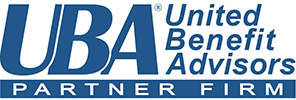
Employers saw unprecedented changes to human resources management in 2016, including Affordable Care Act (ACA) compliance, new Fair Labor Standards Act (FLSA) regulations, parental leave laws and a push for equal pay. With a new year and a new president taking office, 2017 is sure to usher in some major changes and HR challenges that could have significant impact on businesses large and small. Here are a few of the hot button issues to keep on your radar and how to prepare for them:
Keep current on ACA changes
With President-elect Trump taking office, the ACA finds itself once again in the national spotlight, this time standing on more uncertain ground than ever before. Whether the ACA will be repealed fully, partially, or left as is, it’s important for employers to stay current on compliance to avoid penalties and fees. For more information, seek out the helpful questions and answers on the ACA reporting requirements that the IRS provides here.
Don’t assume the law is barred
In November 2016, a federal judge in Texas issued an injunction blocking the new overtime regulations slated to go into effect the first of December. This would have doubled the FLSA’s salary threshold for exemption from overtime pay. Despite the injunction, many employers have already adjusted workers’ salaries or reclassified their employees. While we wait to see what comes from the Department of Labor’s appeal, it is a safe bet for employers to leave their decisions in place, and not assume the law will be permanently barred.
Make a good (and fair) recruitment process a priority
Finding the best employees is one of the most critical aspects to your business. 2016 saw big pushes with diversity initiatives and blind hiring, a practice which means being hired without disclosing your name, educational background or work experience to your future employer. While we expect these trends to carry over in 2017, we also predict a renewed focus on improving the overall job candidate experience. A recent study found that 60 percent of job seekers have had at least one bad recruitment experience, and 72 percent of those report having shared their experience with a recruiter or career websites. In order to ensure that it’s a productive experience for all, employers should maintain consistent communications during the hiring process and be prepared to share tailored feedback should the candidate request it.
Consider updating your performance review process
We’ve all done them, and it’s likely we’ve all dreaded them at least once. One study found that a quarter of employees surveyed found their annual performance reviews were ineffective and didn’t actually help their performance. 2016 saw plenty of conversations about how to improve the outdated process and we expect this to continue in 2017. One strategy that we see gaining popularity in 2017 is building out the review process to include biannual or even quarterly reviews. More frequent reviews may help build rapport between managers and their employees and encourage all parties to stay on track with their goals and objectives for the year.
Focus on company culture and brand
In line with recruiting and employee feedback strategies, employee engagement continues to be a hot button issue. Retaining employees is critical to a business’ success and the last year brought this to light—85% of executives surveyed in the 2016 Deloitte Human Capital Trends report ranked employee engagement as a top priority. We expect to see this trend carry over into 2017 with an added emphasis on wellness programs and work-life balance. As a company’s brand and culture becomes more critical than ever, it’s important to make concerted efforts to keep employees happy, healthy, and engaged.
One of the many keys to a company’s success is being aware of the constantly changing work landscape. As you enter 2017, keep these predictions and actions in mind and we’ll do our best to keep you up to date on the latest.
Originally published by ThinkHR – Read More

